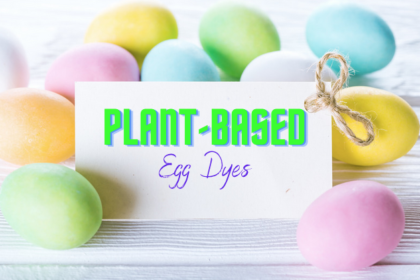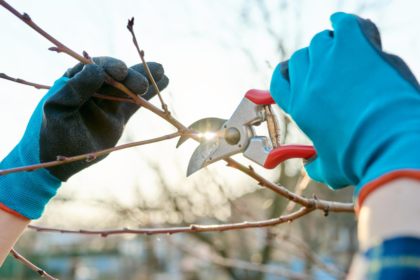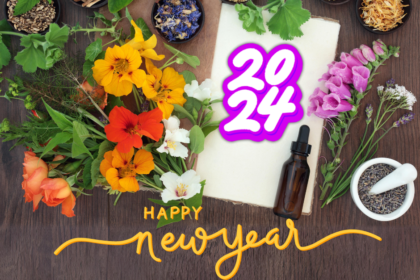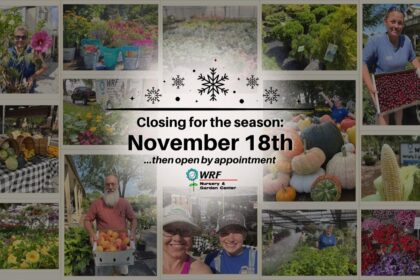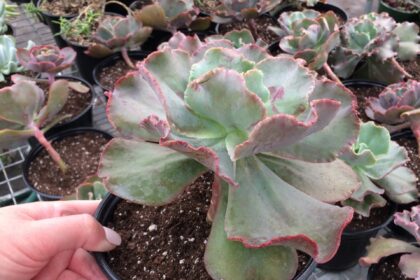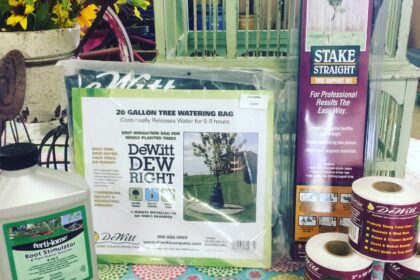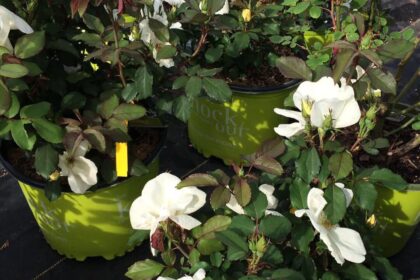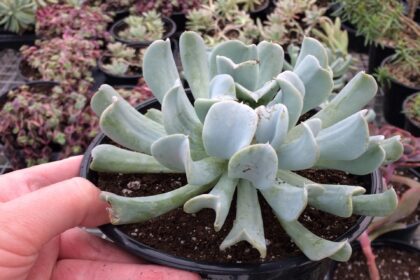Hydrangeas are a top seller here at the nursery, and for good reason! These flowering shrubs are easy to care for and put on an incredible show of colorful blooms for most of the summer.
Every gardener can successfully grow hydrangeas by:
1.) Making sure they have paired the right type of hydrangea with its ideal amount of sun exposure.
2.) Picking out a spot where the soil is well-drained but stays moist.
3.) Familiarizing themselves with the pruning requirements for each specific variety of hydrangea they have planted.
Water and Sun Exposure
Most people are not aware that hydrangea shrubs have shallow roots. Simply adding a few inches of mulch, will help prevent moisture evaporation during the hot months. Keep in mind that while hydrangeas are happiest when planted in moist soil, they do not like “wet feet”!
In general, most hydrangeas need at least four to six hours of sun each day to bloom. While morning sun is typically preferred, the panicle (and some oakleaf types) are typically sun tolerant. When visiting our garden center, note that we do not keep all types of hydrangeas together. We have separated the hydrangeas based on sun exposure needs because some hydrangeas prefer more sun than shade. Be sure to check the plant tag for light requirements, or feel free to ask any of our associates for assistance.
To Prune or Not To Prune
Different types of hydrangeas have different flowering habits. Gardeners need to know exactly which type they have before pruning to prevent them from potentially cutting off next year’s bloom. Both smooth and panicle hydrangeas flower on “new wood”. “New wood” is a term that references the growth from the current season. Both smooth and panicle hydrangeas are reliable bloomers making them customer favorites. Most other hydrangea types will flower from the growth from the previous season. Flower buds on these “old wood” types begin to form in late summer. It is important to know that if these “old wood” hydrangeas are pruned back, damaged, or eaten by wildlife, they will not bloom for you. Protecting these types in the winter is advisable when possible. Lastly, there is also a third type of hydrangea bloom commonly referred to as the “reblooming hydrangea”. These are certain types of big leaf and mountain hydrangeas. Reblooming hydrangeas will flower on both old and new wood.
The Common Types of Hydrangeas
Bigleaf
Hydrangea macrophylla, also known as “mophead” or “lacecap” hydrangea.
- Hardy to USDA zone 5
- Blooms on old wood: so do not prune
- Endless Summer Brand and the following Proven Winners® varieties: Abracadabra® series, Cityline® series, Let’s Dance® series
- Some varieties bloom color may change from pink to blue based on soil aluminum levels.

Panicle
Hydrangea paniculata, also known as “peegee” hydrangea.
- Hardy to USDA zone 3.
- Blooms on new wood: prune in late winter/early spring.
- Typically tolerates full sun
- Proven Winners® varieties include: Bobo®, Fire Light™, ‘Limelight’, Little Lime®, ‘Little Lamb’, Pinky Winky®, Quick Fire®, Little Quick Fire®, Ziinfin Doll®

Smooth
Hydrangea arborescens is commonly referred to as “Annabelle” hydrangea.
- Hardy to USDA zone 3
- Blooms on new wood: prune in late winter/early spring
- Proven Winners® varieties include: Incrediball® series and Invincibelle® Spirit II

Oakleaf
Hydrangea quercifolia
- Hardy to USDA zone 5
- Blooms on old wood
- Native to North America
- Typically more drought tolerant than other hydrangea varieties
- Proven Winners® varieties include: Gatsby™ series

Mountain
Hydrangea serrata are
- Hardy to USDA zone 5
- Blooms on old wood
- Proven Winners® varieties include: Tuff Stuff™ series
Climbing
Hydrangea petiolaris is a large and weighty vine that requires substantial support, such as a wall. Though slow to establish, after the first few years it will vigorously grow to 30-50 feet. Although they can certainly be pruned back, the habit of this plant makes it impractical for the average gardener, hence why they are not commonly found in garden centers.
- Hardy to USDA zone 4
- Blooms on old wood.
- Grows well in full sun to partial shade, but prefers some shade in hotter climates


